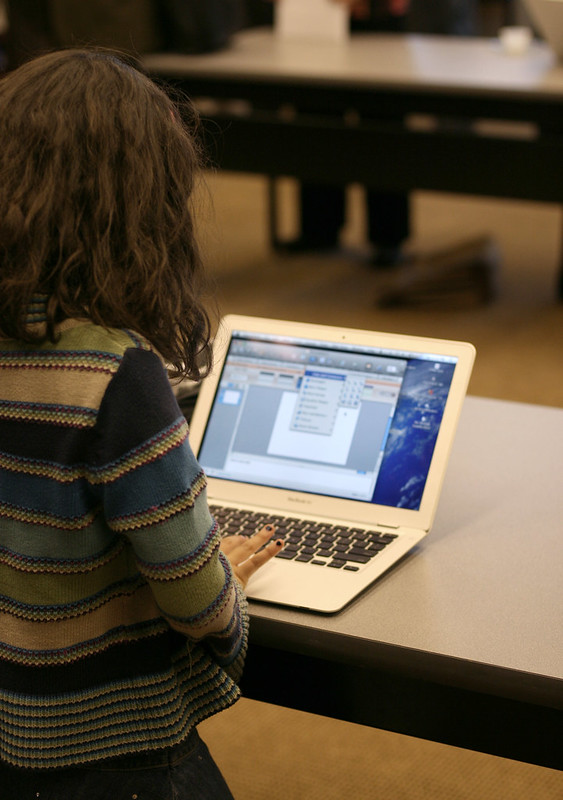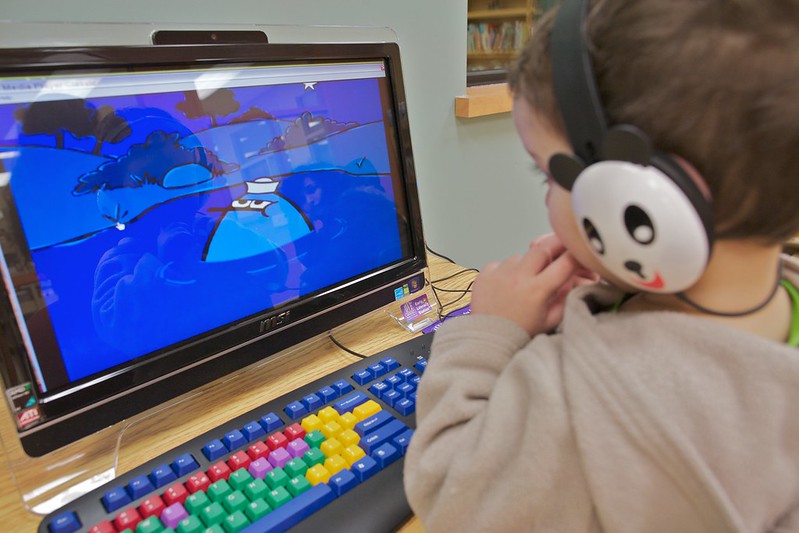Many schools may still be using materials that teach conservative Christian beliefs as history and social studies and express implicit and explicit gender and race bias.

Across the country, the COVID-19 pandemic has forced school closings and a rush to online learning for many K-12 students. In their haste to facilitate this change, a number of schools and school districts have purchased packaged curriculum materials from providers such as Acellus and Edgenuity. These companies, which often market to home schoolers, offer ready-made materials that have had great appeal to public schools in the sudden shift to virtual classrooms.
While schools likely purchased these materials in good faith based on their companies’ claims to meet state learning standards, no one in public schools seems to have read these materials prior to use with an eye toward explicitly religious content and gender and race bias. Likely unwittingly, public schools have purchased and used materials that violate the First Amendment’s religion clauses.
While watchdog groups like American Atheists have alerted some schools to this unconstitutional content, many schools may still be using materials that teach conservative Christian beliefs as history and social studies and express implicit and explicit gender and race bias. Educators using packaged curricula and parents with children in virtual learning should take note of the curriculum materials, be aware of this possible impermissible content and notify schools and watchdog organizations should they discover issues with students’ learning materials.
In late September, American Atheists announced that, following their intervention, Edgenuity removed unconstitutional religious content from the curriculum materials they offered public schools. American Atheists discovered, for example, that one third grade module taught Bible stories as social studies, advancing a particular religious viewpoint in violation of the First Amendment.
The Establishment Clause of the First Amendment—“Congress shall make no law respecting an establishment of religion”—requires government neutrality in matters of religion. That means that the government, including public schools, cannot take actions that support or promote one religious belief over another.
American Atheists vice president of legal and policy, Alison Gill explained, “It’s perfectly fine for history classes, social studies, etc. to teach about religion, especially if you’re doing comparative world religions, as long as it’s not taught in a devotional, sort of ‘this is truth,’ manner. That’s when it becomes more problematic.”
She went on to note that most schools are not well equipped to make these distinctions or teach these things well.
A review of Bible courses in public schools in Texas in the 2011-12 academic year found that many of these courses were “blatantly and thoroughly sectarian, presenting religious views as fact and implicitly or explicitly encourage students to adopt those views.” A 2018 letter from the ACLU to the Kentucky Department of Education stated that Bible Literacy courses throughout the state were clearly violating constitutional principles. Rather than teaching about the Bible from scholarly perspectives, these courses, on the whole, were proselytizing and actively inculcating Christian beliefs.
American Atheists became aware of the Edgenuity materials when contacted by concerned parents in a number of states. In mid-September, Gill sent an advisory letter to the education chiefs in all 50 states encouraging them to ensure curriculum materials did not include unconstitutional content before purchasing.

In November the organization announced Hawaii’s Department of Education had conducted a review of race and gender bias and religious content in Acellus’ curriculum materials that led to the discontinuation of that state’s use of Acellus materials. The review found discriminatory content and content that promoted religion. Around 80,000 participants (44 percent of Hawaii’s students) were using the materials.
Lower grade materials often depicted girls/women and boys/men in stereotypical jobs. Women were bakers, artists and actors. Men were pilots, police officers, doctors and firefighters. The language itself was also gendered—firemen, policemen, mankind. Books included few girls/women as main characters, and the books that did include them did so in stereotypical ways. Materials with girls and women characters focused on fairies, parties and friendships. Those with boys and men focused on bravery, hard work and heroes. White men comprised the entire canon of literary works.
Racial depictions (or invisibility) were also deeply problematic. A social studies unit on The People of America made only one mention of Indigenous people. Photos of groups of children in social studies materials contained no people of color. A social studies unit on Alaska and Hawaii left out Indigenous Alaskans and Hawaiians save one question about Queen Liliuokalani (whose name the presenter mispronounces in the video material). Social studies content also diminished the experience of enslaved people in the U.S., generalizes and provides incorrect information about Indigenous people, and shows an image of a white child wearing a headband and a feather.
The materials also included unconstitutional religious content. Schools can teach about religion, but they cannot proselytize, teach religion devotionally, teach religious viewpoints as truths, or promote one religion over another or religion over non-religion. The Acellus materials clearly violated these norms throughout their curriculum. For example, one true/false question was “Jesus performed miracles (such as laying his hands on the sick).”
In high school history, the materials presented biblical narratives as history. Whole units were devoted to Abraham and the Covenant, Moses and the Israelites, Solomon’s Temple, Jesus’s Death and Christian Apostles and Churches. The presentation of Jesus of Nazareth was from a decidedly Christian perspective about who he was, and an entire history unit was given to Jesus’s parables and teachings.
The Hawaii Department of Education determined that the curriculum was religious instruction in public schools.
Because many schools have turned to packaged curriculum materials to address the move to online teaching, content has not been scrutinized as it should have been. School leaders and parents should give heightened attention to these materials because they may well be promoting racist and sexist stereotypes and unconstitutional religious viewpoints.
Gill suggested that parents, students or educators who find possibly discriminatory or impermissible religious content in online curriculum materials raise the issue with school districts that might not be aware of the problem and can address it quickly themselves. They can also contact American Atheists to make a report, especially if school districts are not responsive. Gill noted that with the newness of the widespread use of these materials and all the difficulties of the present moment making close examination before adoption unlikely, some problems may not yet be evident. Educators and parents should engage in scrutiny of these materials as much as they can to ensure virtual content does not discriminate or violate First Amendment rights.
You may also like:





